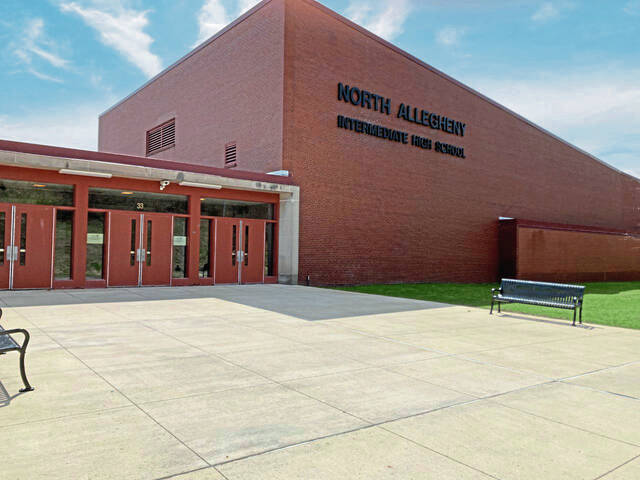North Allegheny budget preview scheduled for May 11
The North Allegheny School District’s final proposed budget for 2022-2023 is scheduled for presentation during the school board’s regular meeting May 11 at 7 p.m. at the Central Administration Offices on Hillvue Lane.
If approved, this final proposal would be distributed in early June to local municipalities, the Northland Public Library and NA school buildings for public view, according to Kermit Houser, assistant director of finance and treasurer.
The school board meets June 15, during which a final budget for 2022-2023 is expected to be approved. It would go into effect July 1.
The preliminary budget projected expenditures of nearly $191.4 million in the general fund, though officials are still awaiting some final numbers and assessing options, according to Houser. A millage rate for 2022-2023 has not been set. The current rate is 19.14 mills. There has been no talk of a tax hike
Houser provided the school board’s Budget and Finance Committee an update on April 20 as to how the proposed final budget was trending.
The district’s finance department meets with North Allegheny staff, administration and board over the course of the year to acquire departmental needs for the coming year and develop a balanced budget, he said.
The 2022-2023 Preliminary General Fund Budget adopted by the school board on Jan. 26 is available to view via www.northallegheny.org under the Finance Department tab.
“Between January and May, the District continues to assess updates to assessed values, state funding, PSERS rates, staffing, and expected expenses and pulls these updates into the Proposed final Budget,” Houser said. PSERS stands for Public School Employees’ Retirement System.
The school board and administration are still considering all budget scenarios as final numbers continue to be made available, he said.
The NA school board is following the guidelines of the Taxpayer Relief Act, also known as Act 1.
The Act 1 Index is an inflationary index which sets the maximum a district can adjust millage to account for rising costs. In years where inflation, or rising costs, outpace the growth of the district’s assessed values, state funding and other expected revenues, boards may elect to adjust millage based on the Act 1 Index, according to Houser.
The millage rate can only be raised by a certain percentage set specifically for each school district. This year, the estimated rate for NASD is expected to be at the maximum of 3.4 percent, which would bring the millage rate to 19.866.
North Allegheny last increased millage in 2018-2019. Houser said the county average is 22.86 mills.
Other 2021-2022 local millage rates include: Fox Chapel Area, 20.12; Hampton Township, 20.30; Mt. Lebanon, 25.59; North Hills, 19.04; Pine-Richland, 19.58; Quaker Valley, 19.47.
The district can choose among several scenarios regarding millage rates and a five-year outlook, Houser said.
For one, the district could keep the millage rate flat over the next five years. But the pace of expenses would grow faster than the expected revenue, decreasing fund balance, Houser said.
Other scenarios could include the school board raising millage rates by the expected maximum Act 1 index of 3.4 percent for this year, 2025 and 2027, assuming the index would continue to be that same percentage annually. Then the general fund balance would stay on par with expenses over the next five years, he said.
The board could decide to keep the rate the same this coming year, and raise the millage rate in 2024 and 2025, and then again in 2027, and still have a solid fund balance, he said.
Another option would be to increase in 2024 and 2026, where he said the fund balance would still be positive, but pretty much depleted. Expenses would likely outgrow revenue eventually.
Or the board could raise the millage rate by 2 percent every year for the next five years. This would produce a positive fund balance in five years, he said.
If the school board votes to raise property taxes to the expected maximum allowance of 3.4 percent this year, or 19.866 mills, the annual impact on a property with a $100,000 assessed value would be an additional $73 in property taxes annually. The average district home assessed value is $250,000, which would mean an extra $181 per year in property taxes, according to the budget presentation.
School Board Director Elizabeth Warner, chair of the NA Budget and Finance Committee, said she didn’t know whether the school board and community would have the “stomach” for several millage rate increases if the board went in that direction. However, she did say the move could be necessary.
“You look at the baseline of not raising taxes at all. It’s hard to imagine a viable long-term scenario,” she said.
She said that preparing for future capital expenses is important. And maintaining an ongoing, positive fund balance helps secure NA’s good bond rating.
“We want to save the district money in the long run, “ she said.
Expenses are generally driven by inflation year over year. District officials are trying to soften the impact of large expenses by refreshing items such as computers/technology, buses and textbooks in cycles, Houser said.
However, the district may have to borrow to complete capital construction projects in the upcoming years, Houser said.
In the current year, the finance department and staff have tried to streamline expenses by reducing staffing costs through efficiencies and finalizing software and technology agreements that came in lower than initial estimates.
Natalie Beneviat is a Trib Total Media contributing writer.
Remove the ads from your TribLIVE reading experience but still support the journalists who create the content with TribLIVE Ad-Free.


